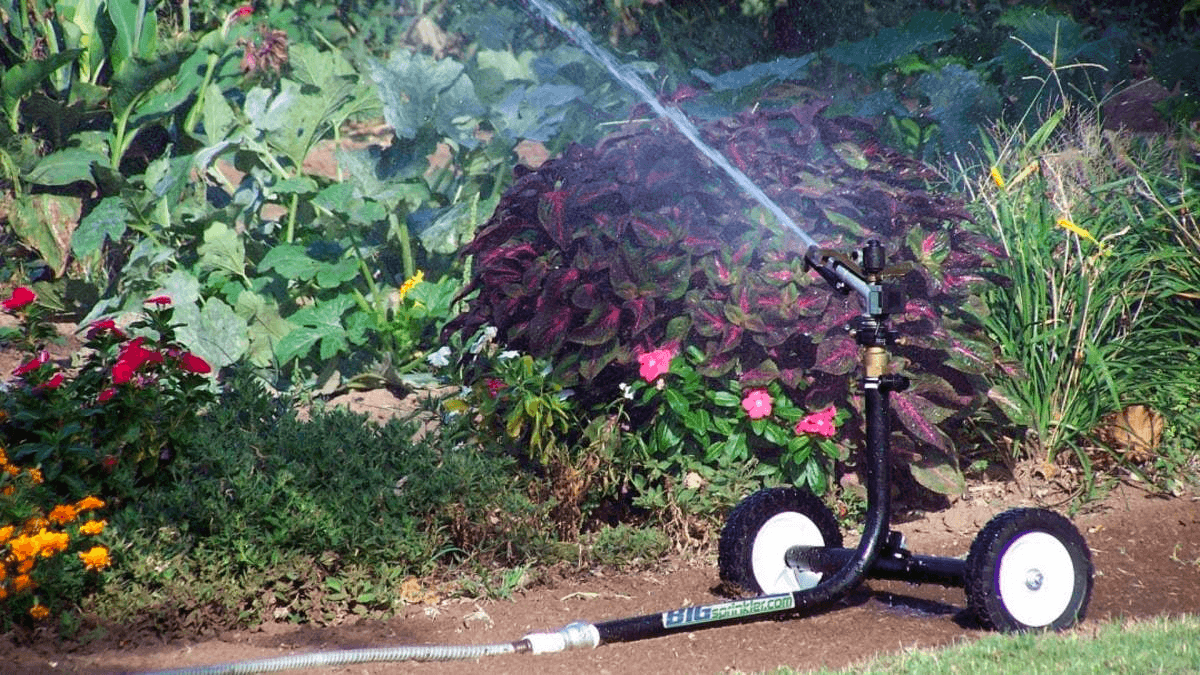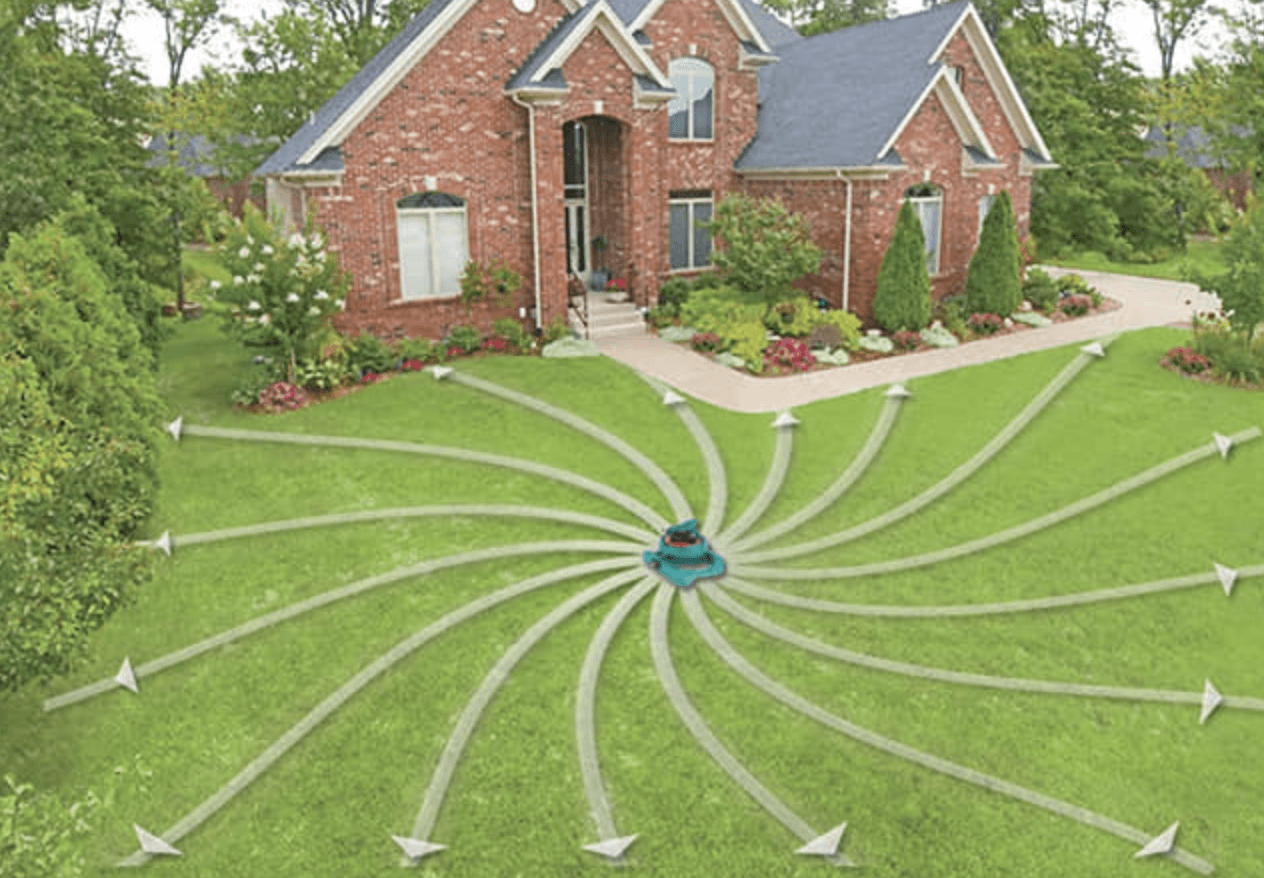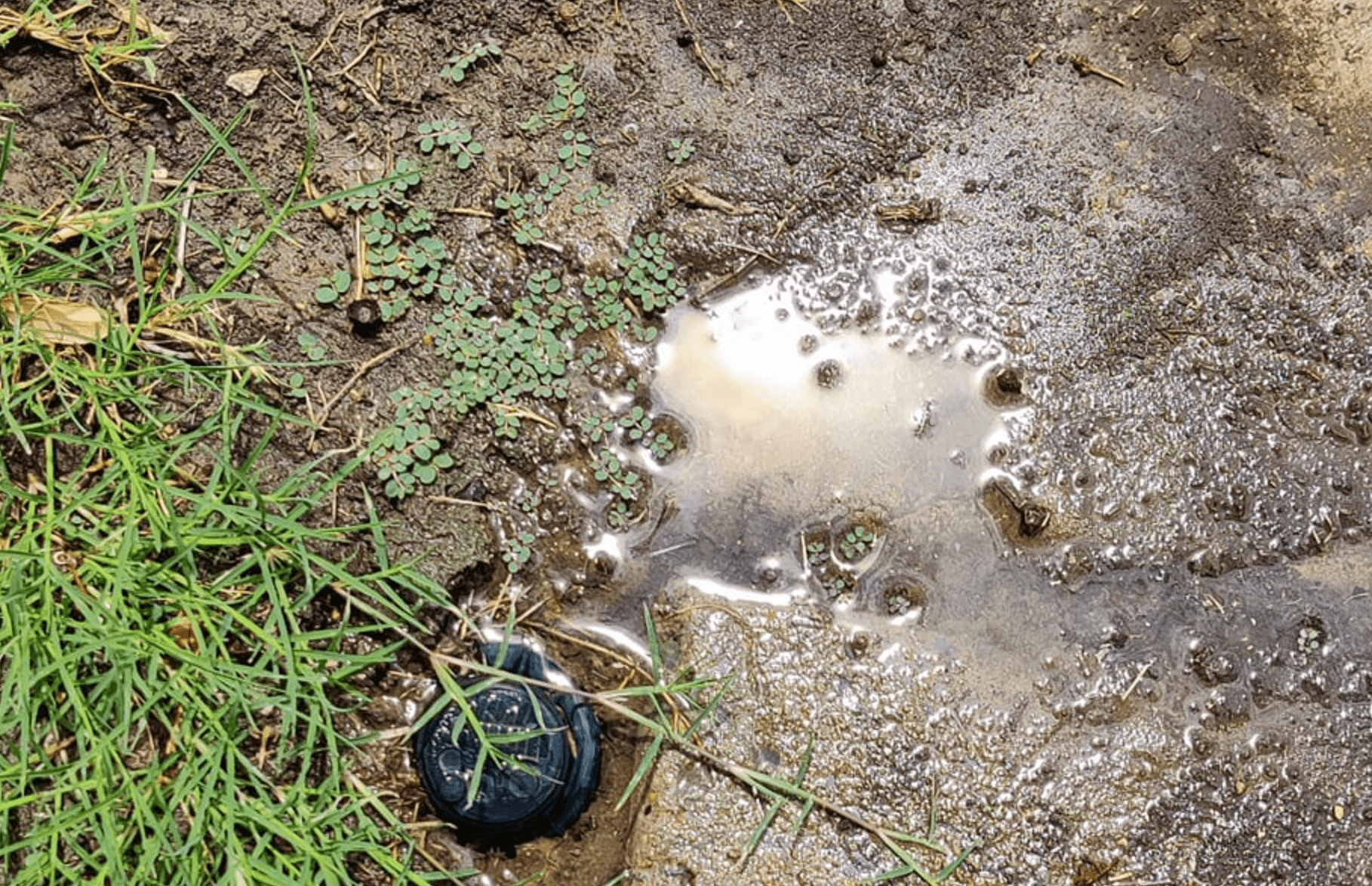Key Takeaways
The initial watering post-sod installation is critical, requiring a thorough 45-minute soak to establish deep and healthy roots.
A gradual reduction in watering frequency is essential for encouraging root strength and lawn resilience.
Adapting the watering schedule based on climate conditions and soil type is crucial to ensure optimal soil moisture without overwatering.
After the initial 3-4 weeks, transitioning to standard lawn care routines is important for maintaining lawn health and monitoring for any signs of distress.
Getting a new sod lawn is exciting. In almost no time, you’ll have a vibrant, lush lawn to enjoy.
But, to achieve a fantastic green lawn, you need to make sure to take care of your new sod and water it properly.
While learning how to water your sod grass may seem intimidating, it’s quite easy if you have the right guidance. In this guide, we’ll walk you through the essentials of sod watering so you can feel confident taking care of your new lawn!
Understanding the Basics: How to Water Sod
The good news is that watering sod is very easy! Once it has fully established its root system, you can maintain it just like you would the rest of your lawn.
The tricky part is the first four to six weeks.

As your sod reaches its roots down, it will need quite a bit of water. But you also don’t want to oversaturate it.
Level Up Your Lawn Skills
Once per week we'll send you an interview from someone who has mastered the art of lawn care.
The general rule for new sod is to keep your soil damp but not drenched. This will help your sod grass become the thriving, verdant lawn of your dreams. Ready to get into the details of watering your sod so you can become a sod watering pro?
Let’s dive in.
The First Soak: Starting Your New Lawn Off Right
One of the most important waterings in the life of your new lawn is the first soak. After your sod is installed, the roots will be very shallow and can dry out easily.
It’s crucial to provide your lawn with the water it needs to develop strong, healthy roots in your soil.
To do this, you will want to water your sod immediately after installation.
And you won’t need to hold back much, as you’ll want to soak your new lawn for about 45 minutes to ensure it has all the water it needs.
While this might seem excessive, the first soak is a special circumstance, and your sod lawn isn’t going to need this level of watering again.
The goal is to get the soil moist up to around three to four inches deep. Water evenly to ensure consistency and to provide all of your sod with much-needed moisture. Remember, you also want to avoid overwatering.
Overwatering can cause roots to rot, so keep the ‘damp, but not drenched’ mantra in mind. Your soil should be moist, but it shouldn’t be waterlogged. And that’s all for the first soak!
Your new lawn is off to a strong and promising start. But your new sod still needs some extra attention in the coming weeks. Let’s take a look at what that watering schedule looks like.
New Sod Watering Schedule: Frequency & Duration
Week 1
For the initial week post-installation, your new lawn will still be pretty thirsty! To quench this thirst, you’ll need to water your lawn three times per day.
This watering should take around 20 minutes, ensuring you get down to the soil and roots. This should ideally be done during the cooler parts of the day — think early morning and late afternoon.
Once you’ve crossed the one-week mark, it’s time to shift gears a bit.
Week 2
In week two, you can reduce your watering schedule to twice a day. Make sure to pay special attention to any dry patches that you notice.
After the second week is complete, you’re ready to mow your new lawn for the first time. Make sure to set your mower to the proper height based on the type of grass you have, and raise the height an extra inch in the hot summer months.
Week 3 and Later
From this point, you can transition to a watering schedule every couple of days, ensuring your lawn gets about 1 inch of water per week. Again, be attentive to the time of year. If it’s a hot summer, you may need to keep your daily water scheduling for another week.
After roughly four weeks, your new sod lawn should be established, and you can take care of it like a normal lawn! Remember, this is a general guideline, and your lawn's specific needs may vary based on various factors like weather, soil type and sod type. The key is to keep a vigilant eye on your lawn and be flexible in adjusting your watering schedule as needed.
How Much to Water New Sod: Finding the Perfect Balance
For one, you want to keep the ‘damp, but not drenched mantra’ in mind.
Too much water in the beginning can cause issues, but too little will mean weak roots and dry patches. It’s a bit of a tightrope, but the results are well worth it.
If you find your lawn is too dry or too wet, there’s no need to panic right away. Simply adjust your water frequency and duration accordingly, and you’ll master the tricky art of watering new sod.
Now, that advice works in perfect weather conditions, but what about other factors like climate, temperature, sod types and soil types? Let’s take a closer look at how you can adjust your watering based on these variables.

Adjusting Your Technique for Climate Variations
Not everyone will be installing a new lawn in ideal conditions. Whether you live in a sun-soaked desert or a rainy coastal town, you will have to keep your local climate in mind when watering your new sod lawn.
Your lawn may need additional watering if you’re in a very dry or hot environment. Simply make sure to check the soil and ensure your water is going down far enough and that the soil is moist without being waterlogged.
But what about rain? While rain is great for lawns, it can be tricky to work around when you’re trying to establish a new sod grass lawn.
Again, you will simply need to adjust for your conditions. If it’s raining heavily daily, you might not need to provide your sod with additional water at all. The key takeaway in any climate is to be attentive to your lawn’s moisture levels and make adjustments based on what you see.
In short, there's no one-size-fits-all approach to lawn care. Your lawn is unique, and your care routine will be too!
Strategies for Hot vs. Cool Temperatures
As the thermostat rises and falls, so should your watering habits.
While you can’t control the weather, one factor you can control is when you water your lawn. If you live in a hot climate, make sure to water in the early morning or late evening when it's cool.
In rainy weather, keep an eye on the forecast and make the call to water your lawn around the rain schedule. After it's done raining, you can check your lawn’s moisture levels to see if it has sufficient water from the rain or if you need to provide it with more.
As for cooler temperatures, you shouldn’t have to change your watering schedule up too much. However, if temps dip below freezing, you should make sure to drain your sprinkler system (if you have one) to prevent it from freezing and affecting your sod lawn.
In truth, you shouldn’t be installing a sod lawn in December, January or February unless you live in a warm area. The risk of below-freezing weather and snow can make it much more difficult to take care of your new sod. Fall and Spring, in that order, are the best times to install a sod lawn in most climates.
Special Considerations for Different Sod Types
There are many different types of sod grass, and each has its own maintenance needs. While all sod types need a good drink of water, the frequency and amount may differ depending on the type of grass.
Fertilization and soil needs can also vary for different sod types.
Ideally, you pick a sod type that best fits your region and soil. This is one of the great benefits of working with a sod installation professional. They can help determine what sod type is best for your lawn. For instance, there are sod types that thrive in warm weather and others that thrive in cool weather.
Some types do better in salty, coastal conditions than others. While you would need to do your own research to determine which is best for your area, a good sod installation professional can take care of this part for you and provide you with the maintenance instructions you need to ensure your lawn is established properly.
Know Your Soil
Soil plays a big role in your choice of sod and your maintenance schedule. Soil generally falls into three different categories — loamy, sandy and clay. Each soil type will require different watering schedules.

If you have sandy soils, your water will drain easily, but it won’t hold so well. Meaning you may have to water more frequently and you likely won’t have to worry as much about overwatering. Clay has the opposite need, as it holds water well and may not need as frequently of a watering schedule.
Loamy soil offers the best of both worlds and will typically benefit from a standard watering schedule. Remember, it’s all about personalized care when it comes to watering your sod lawn. Take the time to get to know your lawn’s needs, and you’ll have a lush lawn for years to come!
Tools and Techniques for Effective Watering
While you can certainly follow your sod care instructions however you see fit, there are some tools and techniques that can make maintaining your new lawn easier. Here are some quick tips to make sure your post-installation month goes off without a hitch:
Install sprinklers or an irrigation system — A new sod lawn can be a bit needy, and not everyone has time to stay on top of the water schedule. That’s where a good sprinkler or irrigation system saves the day. Simply schedule your sprinklers to go off at the right time and watch as your sod takes root. It’s still a good idea to keep an eye on soil moisture to ensure no adjustments are needed, but that’s still much easier than watering manually.
Fertilize, fertilize, fertilize — Your new sod is thirsty, but it’s also hungry! Make sure to feed it what it needs with a fertilizing regimen. Though fertilization may differ slightly amongst sod types, following a standard fertilization schedule is usually sufficient.
Please stay off the grass — Pretend there’s a ‘Please Stay Off Grass’ sign on your lawn for the first month post-installation. Make sure to keep kids, pets and yourself off the grass as much as possible until the sod has established its roots.
Enlist professional installers — Post-installation care is important, but the installation process needs to be done right, too. Hiring professionals will ensure your lawn is properly installed. They will also provide you with care instructions specific to your sod type, and you can always call and ask them questions about the post-installation maintenance.
Transitioning from New Sod to Established Lawn Care
Congratulations! Your new sod should have rooted firmly into the soil after around three to four weeks. You can now pivot back to regular lawn care routines. Tweak your watering schedule to how you would water your lawn normally.
Also, make sure to follow a mowing regimen that doesn’t cut off more than ⅓ for each mow. Fertilization will also be a good tool in your arsenal going forward. You should especially pay attention to your lawn’s appearance for any signs of distress or disease and address these problems accordingly.
Finally, enjoy your new lush and vibrant lawn! You’ve earned it.
Plan Your Perfect Lawn with Sod Calculator
Ready to get started on your perfect sod lawn? Sod Calculator can help. Using Sod Calculator, you can easily get a complete sod estimate sent right to your inbox. Simply enter your address and draw simple shapes on the satellite map to calculate square footage, choose your grass type and add any extra considerations. After that, you'll get your free estimate so you know what to expect for your sod installation project. Estimate your sod cost today!
This article was originally published on January 23, 2024
Level Up Your Lawn Skills
Once per week we'll send you an interview from someone who has mastered the art of lawn care.